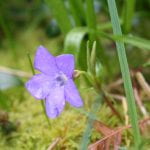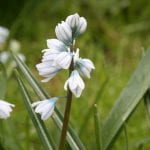🌲What did European Settlement Mean for all the People Involved?🌲
🌲Hello and welcome back the forest of learning! This post will centre on the process of learning about European settlement. With a partner, we would also create an Infographic as well as a video to go with it. We will focus on three different groups during the time of European settlement in Canada; the French, the British, and the First Nations. This is the last project of quarter 4, and I have accomplished so much this quarter. This project was really fun and I hope you enjoy reading!🌲
As always, we followed the project path throughout the course of the project:
To start off the first day, we gathered into table groups and wrote NTK (need to know) questions. The teacher read the project plan as we wrote as many questions as possible that would fit into three categories; Product, Process, and Content. This allows us to be curios and become interested in our future project. We then gathered the NTK’s and pinned them on a board; by the end of the project they were all answered!
After getting to know the project and writing some questions, we went on to learn a little bit about the history of Deep Cove. We spent two days learning about different events that have lead up to the Deep Cove you see today. After learning about the history of the Deep Cove, we were given time to sit outside and write Milestone 1. In Milestone 1 we identified the continuities and changes of deep cove and reflected on what has happened to shape what we see today. In Milestone 1 I believe I demonstrated a great understanding of identifying continuity and change!
Once we had completed Milestone 1, it was time to learn more about the main topic; European settlement. Every week we spent about 2-3 days learning about the topic, and throughout the project we took notes! The teachers gave us a “note template package” in Pages where we took notes the entire time. This helped us stay organized throughout the project. 
These are some topics we learned about: the History of the Cove, How to Make a Good Infographic, the Fur Trade, Expanding the Fur Trade, New France, the North West Company, the Hudson’s Bay Company, Life in a colony, Ouendat and Haudenosaunee First Nations, Treaties and Agreements, and Colonization. I found learning about ‘expanding the fur trade’ was especially informative because of how much depth we went to with each group of people.
After we learned about the fur trade, as a class we also did something called a “Fur Trade Simulation” where we were split into 4 groups; the North west company, the Hudson’s bay company, the Haudenosaunee, and the Ouendat. I was put into the North West Company. The goal for us was to get as many beaver pelts as possible through trading with the two First Nation groups (Ouendat, Haudenosaunee). We traded common items from Europe such as fishhooks or a needle and thread, while the First Nations offered us beaver pelts and tobacco. We were competing with the Hudson’s bay Company to get as many beaver pelts as possible before the season ended.
After learning more in depth about some of these topics, we moved onto milestone 2 where we created a continuity and change chart. On the chart we would identify the significance of important events throughout the time of European settlement. We did this for 3 continuity events and 3 change events. We had an event such as “Change: the colony of New France established in 1608”. Depending on which event (continuity or change) you would have different criteria to judge how significant the event was. At the end, we would judge with the criteria how significant the event was out of 5. I learned a lot in this milestone, I think I definitely showed a good understanding of identifying continuity and change as well as using evidence from various sources.
From this point in the project on, we mainly focussed on our Infographic. This is also when we met our partner, my partner was my friend Clare! She was an awesome partner to work with. If you remember my post “🌲The Medium is The Message🌲” we learned graphic design skills and created an advertisement using Canva. We used those same skills to design our Infographic! We were given one of 5 themes; Coral, Green, Orange, Brown, or Blue. Clare and I were given the green template which looked like this:
With this template, we based our graphics and symbols fitting the same aesthetic. The first milestone we completed as a partnership was Milestone 3 or “3 facts, 3 graphics”. We created one graphic as well as one fact per three groups we studied (British, French, First Nations). We put it on a chart with sources to back up our facts, this would help prepare us for putting it on the Infographic. We created our graphics on Keynote to be eventually put on our Infographic.
Aside from the Infographic, we also learned about using evidence and identifying reliable sources. To start, we created a spreadsheet with our table group about evidence. This spreadsheet helped us learn about evidence, we had about 10 minutes to create it as a group. On top of the spreadsheet, we also learned about various sources and found which sources were reliable, and which weren’t.
After learning about evidence, we went onto creating our thesis statement. We took our three facts we created earlier and crafted a statement which supported our Infographic. It took many tries, but we finally finished our thesis! Here is how it turned out:
European settlement changed the lives of the First Nations. Alliances between the two groups allowed them to trust each other and to trade with one another, which would expose them to new resources. This partnership was mutually beneficial, and the concept of trading goods between alliances has remained to this day.
When we finished creating our thesis, it was then time to develop our first draft of our Infographic. We had already created the graphics and thesis statement, but we still needed to improve our facts. Here was the first draft of the Infographic:
When we created the Infographic, we also participated in a class critique where we would go on a gallery walk and critique each other’s Infographics. Here was the criticism Clare and I got:
After we got the criticism, we made MANY drafts of the Infographic, and after a long time of tweaking copies of our Infographic we finally got it to it’s final form! Here is how it looks like.
The final step of this project was creating the video to go along with our Infographic. We used “Keynote magic move” to fully make our video. We recorded, edited, and tweaked it until it was great! To be honest, it took a long time, and there was a a lot of troubleshooting throughout the process, but we finally did it! Here is how it turned out.
🌲In reflection, I actually really enjoyed this project. This project helped me learn so much about European settlement! I especially liked creating the Infographic with my partner. It was a bit difficult to create the video, but in the end I am really happy with the result. So, what did European settlement mean for all the people involved? Well, European settlement changed the lives of the First Nations. Alliances between the two groups allowed them to trust each other and to trade with one another, which would expose them to new resources. This partnership was mutually beneficial, and the concept of trading goods between alliances has remained to this day. Thanks again Clare for being such an amazing partner!🌲
As always, thank you for watching me grow in the forest of
🌲learning🌲

































Leave a Reply